(8732 products available)

































































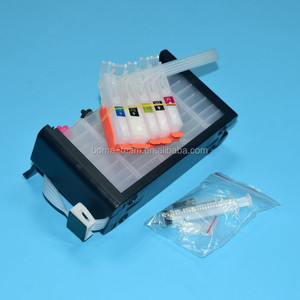

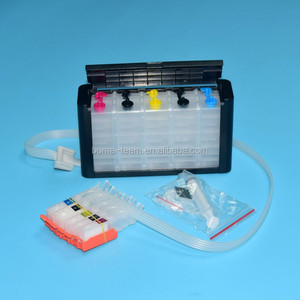


































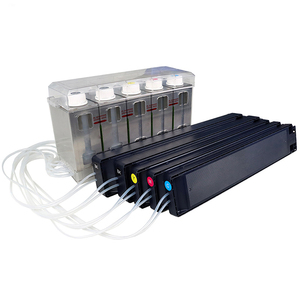
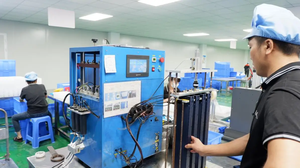
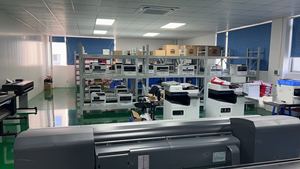
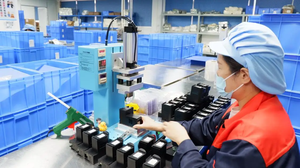

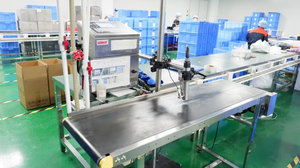
















































































In the realm of modern printing, the advancement of technology has brought about innovative solutions that cater to the diverse needs of users, ranging from personal to professional environments. Among these solutions, continuous ink system has emerged as a game-changer, offering an efficient and cost-effective alternative to traditional ink cartridges. These systems are designed to provide a continuous flow of ink to the printer, significantly reducing the need for frequent cartridge replacements. By utilizing external ink tanks that connect to the printer, continuous ink system ensures a steady supply of ink, making it a practical choice for high-volume printing tasks. As the demand for sustainable and economical printing solutions grows, understanding the intricacies of continuous ink system becomes essential for making informed decisions.
There are several types of continuous ink system available, each designed to cater to specific printing needs and preferences. The most common types include gravity-fed systems and pressure-based systems. Gravity-fed continuous ink system rely on the natural pull of gravity to deliver ink from the external tanks to the printer, ensuring a consistent flow without the need for additional mechanical assistance. On the other hand, pressure-based systems use a small pump or pressurized mechanism to push ink through the tubes, providing more control over the ink flow, especially in high-speed printing scenarios. Each type of continuous ink system has its own advantages, with gravity-fed systems being simpler and more cost-effective, while pressure-based systems offer greater precision and consistency.
The primary function of continuous ink system is to ensure an uninterrupted supply of ink to the printer, which is particularly beneficial for environments that require extensive printing. These systems are equipped with features that enhance usability and efficiency, such as transparent ink tanks that allow users to monitor ink levels easily. This transparency eliminates the guesswork involved in determining when a refill is needed, thus preventing any unexpected interruptions during printing tasks. Additionally, continuous ink system often come with high-capacity tanks, capable of holding significantly more ink compared to standard cartridges, thereby reducing the frequency of refills. The integration of smart chips in some systems also allows for seamless communication with the printer, ensuring compatibility and optimal performance.
The construction of continuous ink system involves a blend of durable materials designed to withstand the rigors of frequent use. The external tanks are typically made from high-quality plastic that is resistant to cracking and leakage, ensuring that the ink remains secure. The tubing that connects the tanks to the printer is crafted from flexible yet robust materials that can handle the constant movement and pressure of ink flow. In terms of the ink itself, continuous ink system use specially formulated inks that are designed to work seamlessly with the system's components. These inks are often dye-based or pigment-based, each offering unique benefits such as vibrant colors or long-lasting prints. The choice of ink can impact the overall quality of the prints, making it crucial to select inks that are compatible with the specific continuous ink system being used.
To maximize the benefits of continuous ink system , it's important to follow best practices for installation and maintenance. Begin by ensuring that the system is properly installed, with the external tanks positioned at the same level as the printer to facilitate a smooth ink flow. Regularly check the ink levels in the tanks to avoid running out of ink during critical printing tasks. It's also advisable to perform routine maintenance on the system, including cleaning the tubing and checking for any blockages or air bubbles that could disrupt the ink flow. When refilling the tanks, use only the recommended inks to maintain the integrity and performance of the continuous ink system . By adhering to these guidelines, users can enjoy the full potential of their continuous ink supply system, achieving high-quality prints while minimizing costs and environmental impact.
When selecting a continuous ink system , it is essential to consider several factors to ensure compatibility and efficiency. First, assess the printer model and brand, as compatibility is a critical aspect of the selection process. Not all systems are universally compatible, so it is important to verify whether the continuous ink system is designed for your specific printer. Also, consider your printing volume needs; high-capacity systems may be more suitable for environments with extensive printing requirements. Evaluate the type of ink used by the system, as dye-based inks offer vibrant colors, while pigment-based inks provide long-lasting prints. Understanding these aspects will aid in choosing a continuous ink system that meets your printing demands and budget constraints.
The main advantage of employing a continuous ink system lies in its ability to provide a consistent ink supply, reducing the need for frequent cartridge replacements. This not only lowers operational costs but also minimizes the environmental impact associated with disposable cartridges.
Yes, the choice of continuous ink system can influence print quality. Systems utilizing high-quality, compatible inks tend to produce sharper and more vibrant prints. It is important to select a system that matches your printer's specifications to ensure optimal print results.
continuous ink system contribute to sustainability by reducing waste generated from discarded cartridges. The use of refillable ink tanks significantly decreases the environmental footprint, aligning with eco-friendly practices. Choosing systems with biodegradable or recyclable components further enhances their sustainability.
Regular maintenance is necessary to ensure the efficient functioning of a continuous ink system . This includes cleaning the tubing to prevent blockages and checking for air bubbles that might disrupt ink flow. Proper maintenance helps maintain print quality and prolongs the system's lifespan.
Compatibility varies among different continuous ink system models. It is crucial to confirm that the system you choose is designed to work with your specific printer model. Consulting the manufacturer's guidelines and specifications can help ensure a successful installation and operation.